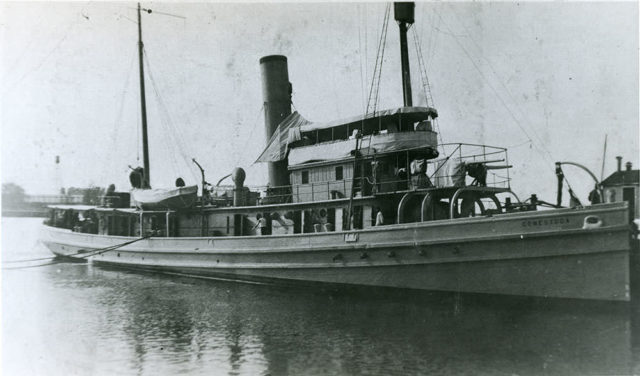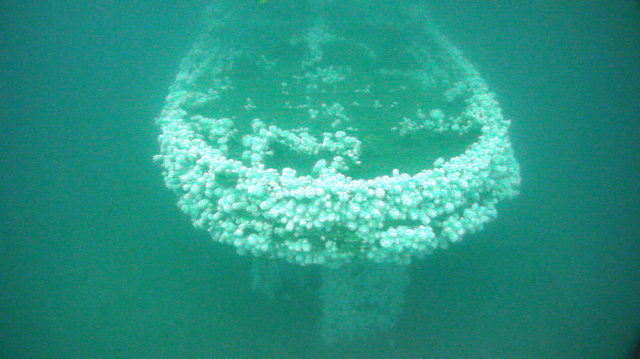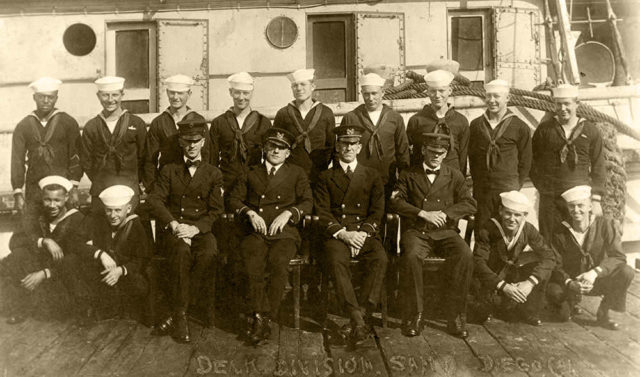
A missing United States Navy tugboat has been rediscovered after its disappearance nearly a century ago. The wreck had originally been found in 2009 and was located 189 feet underwater just three miles off the Southeast Farallon Island in the Greater Farallones National Marine Sanctuary. Finally, in 2014, a team of government researchers began investigating and, nearly a year later in 2015, they announced that the wreck was in fact the missing USS Conestoga.
The USS Conestoga did not start its life as part of the US Navy. Rather, it was originally built to tow coal barges for the Philadelphia and Reading Railroad Company. It was 170 feet long and made primarily out of steel, although the deck and some upper features were made of wood. At that time, it was one of the largest seagoing tugboats around.
In 1917, the US Navy purchased the Conestoga after the United States entered World War I. It continued its towing duties down the Atlantic coast. By the end of the war, it was attached to Naval Base No. 13, Azores. Once the war had ended, it was assigned harbor tug duty at Norfolk in the state of Virginia. In 1920, it was reclassified as USS Conestoga AT 54 and underwent several alterations. Then, it was ordered for duty as a station ship in the American Samoa. The commanding officer was Lt. Ernest L. Jones of the US Navy.
After departing San Francisco, however, the USS Conestoga and her crew disappeared. It had been heading to Hawaii before reaching its final destination, but once it left the harbor no one saw either the ship or the 56-man crew again.

Around the time of the Conestoga’s departure, weather logs show that the wind in San Francisco’s Golden Gate area had risen to 40 miles per hour, whipping up the seas and causing high waves. The USS Conestoga apparently did make contact with another ship via radio. The transmission was heavily garbled and terse – the Conestoga was “battling a storm and that the barge she was towing had been torn adrift by heavy seas.”
When the ship failed to arrive in Hawaii, a massive air and sea search was launched by the Navy – the largest of its time, covering hundreds of thousands of square miles. Yet they couldn’t locate the craft. What they did find was one lifeboat off of Manzanillo, Mexico which had the letter “c” on its bow.
Fast forward to today. NOAA is currently in the middle of a years-long effort to find, map, and investigate about 300 shipwrecks in the waters off San Francisco. The Conestoga had been detected during underwater surveys, and it’s location marked by NOAA. Of the USS Conestoga’s rediscovery, NOAA Deputy Administrator Manson Brown commented, “After nearly a century of ambiguity and a profound sense of loss, the Conestoga‘s disappearance no longer is a mystery.”

The current theory as to its location is that the USS Conestoga had been attempting to reach a protected cove on Southeast Farallon Island. It would have waited out the storm there, but unfortunately, it did not make it.
The investigators of the wreck have taken many photos and videos that can be viewed online. The videos show the wreck as largely intact and lying on a seabed. Some damage from time and corrosion is present. The wooden deck has collapsed, as well as some of the other, more vulnerable, features. Marine life has gotten hold of the ship; it covers the ship’s exterior and, no doubt, its interior too. So far, no human remains have been found; the exact fate of the crew, then, remains a mystery.